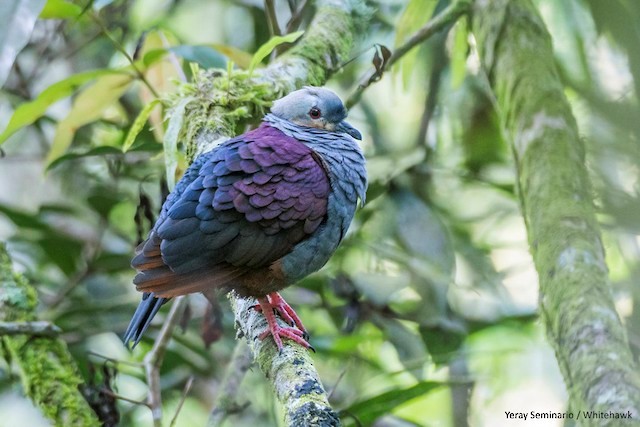Birdfinding.info ⇒ This spectacular species is shy and localized, but can often be found at first light in the Hardwar Gap area (Woodside Drive, Catherine’s Peak, Section, and Silver Hill Gap), Stewart Town, Ecclesdown Road, and Marshall’s Pen. Could be found along almost any trail in Cockpit Country and the eastern mountains, but its secretive, retiring habits make it difficult to observe.
Crested Quail-Dove
Geotrygon versicolor
Endemic to Jamaica, where it is a locally common resident of humid montane and foothill forests, mainly in Cockpit Country and the Blue, Port Royal, and John Crow Mountains. Scarce elsewhere, but likely still occurs in suitable pockets of quiet hilly forest the length of the island.
Identification
A unique, beautiful bird, with many subtle variations in its plumage: gray-blond crest; buffy cheek; puffy gray neck-ruff; slaty breast and belly; maroon mantle and shoulders; indigo-violet secondaries, back, rump, and tail; and chestnut primaries and vent.
The two other plump, terrestrial dove species that sometimes occur with it, Ruddy Quail-Dove and Caribbean Dove, are much paler with completely different overall plumage patterns.

Crested Quail-Dove. (Silver Hill Gap, Jamaica; April 5, 2015.) © Sam Woods
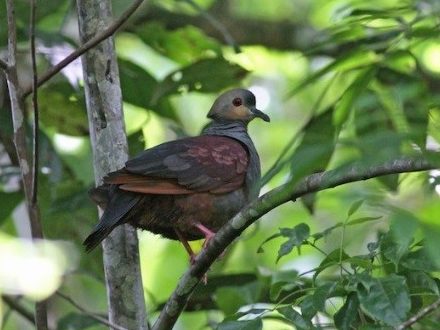
Crested Quail-Dove. (Ecclesdown Road, Jamaica; March 11, 2017.) © Michael McCloy
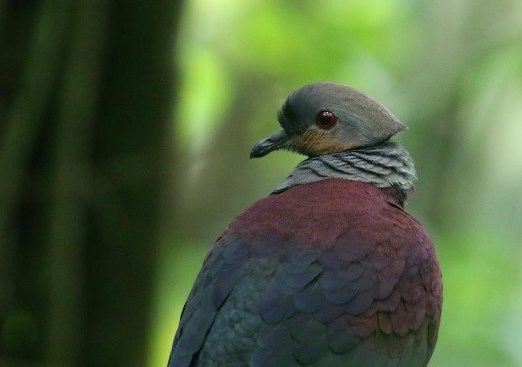
Crested Quail-Dove. (Hardwar Gap, Jamaica; April 26, 2016.) © Steve Gast
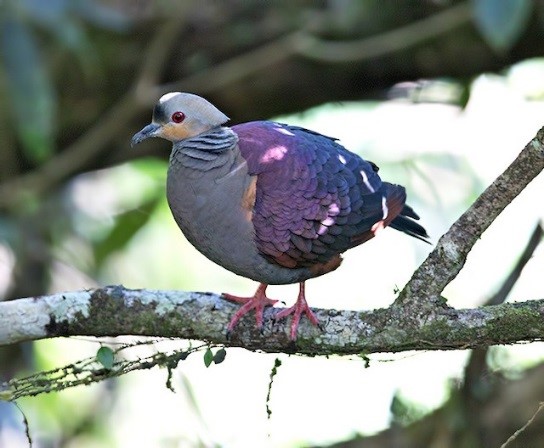
Crested Quail-Dove. (Silver Hill Gap, Jamaica; April 5, 2015.) © Sam Woods

Crested Quail-Dove. (Ecclesdown Road, Jamaica; February 25, 2018.) © Dubi Shapiro
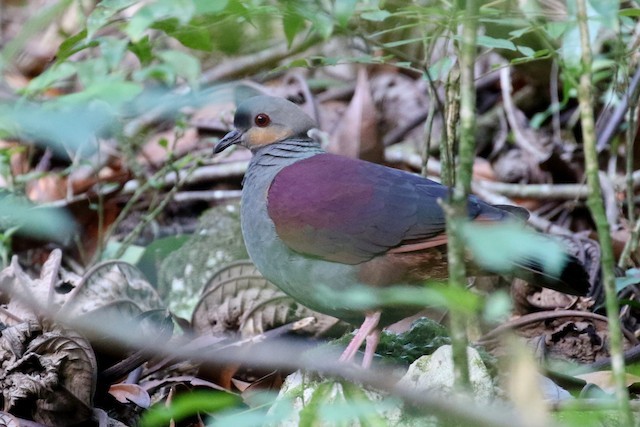
Crested Quail-Dove. (Stewart Town, Jamaica; January 27, 2019.) © Matthew Grube
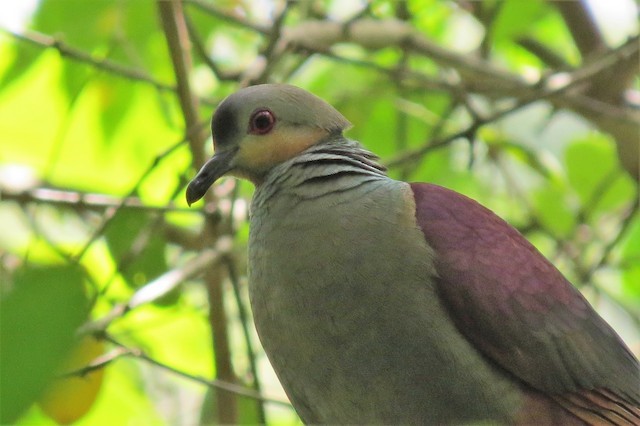
Crested Quail-Dove. (Stewart Town, Jamaica; June 28, 2017.) © Rob Van Epps
Notes
Monotypic species.
IUCN Red List Status: Near Threatened.
References
BirdLife International. 2016. Geotrygon versicolor. The IUCN Red List of Threatened Species 2016: e.T22690924A93294797. http://dx.doi.org/10.2305/IUCN.UK.2016-3.RLTS.T22690924A93294797.en. (Accessed October 9, 2017.)
eBird. 2019. eBird: An online database of bird distribution and abundance. Cornell Lab of Ornithology, Ithaca, N.Y. http://www.ebird.org. (Accessed April 20, 2019.)
Gibbs, D., E. Barnes, and J. Cox. 2001. Pigeons and Doves: A Guide to the Pigeons and Doves of the World. Yale University Press, New Haven, Connecticut.
Haynes-Sutton, A., A. Downer, R. Sutton, and Y.-J. Rey-Millet. 2009. A Photographic Guide to the Birds of Jamaica. Princeton University Press, Princeton, N.J.
Raffaele, H., J. Wiley, O. Garrido, A. Keith, and J. Raffaele. 1998. A Guide to the Birds of the West Indies. Princeton University Press, Princeton, N.J.
